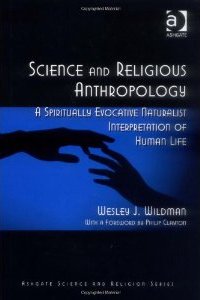 Overview
Overview
Science and Religious Anthropology documents an impressive convergence among many disciplines—biological sciences, human sciences, and humanities—about human beings. The disciplinary contributions are at different levels of complexity, from evolution of brains to existential longings, but they are generally compatible and jointly define a modern secular interpretation of humanity. This emerging consensus supports some aspects of traditional theological thinking about human nature in the world’s religious traditions, but seriously challenges other aspects. The book patiently teases out these implications for philosophical and religious anthropology and argues that the modern secular interpretation of humanity is most compatible with a naturalistic religious theory of human life.
The convergence of multiple disciplines on a modern secular interpretation of humanity is an historic achievement of human inquiry and should be taken with the utmost seriousness by religious thinkers. But that scientific accomplishment does not by itself settle all-important questions about the meaning of life, even though it heavily constrains the existentially potent interpretations of human life preserved within the world’s religious traditions. This book resists the reduction of meaning and value questions. It argues for a religious interpretation of human beings as bodily creatures emerging within a natural environment that permits engagement with the valuational depths of reality. This engagement promotes spiritual quests to realize and harmonize values in everything human beings do, from the forging of cultures to the crafting of personal convictions.
Distinctive Features
Science and Religious Anthropology displays a high level of detailed engagement with the natural sciences, with philosophy, and with theology, as well as a high degree of integration among these disciplines.
The book strikingly argues that there is significant convergence of all scientific disciplines on a compelling theory of human nature. It shows that this emerging scientific view of human nature is compatible with religious perspectives on the human condition, in important respects. It also shows how the dialogue between scientific and religious perspectives on human nature entails a double critique both of traditional religious anthropologies and of some aspects of the sciences.
The book elaborates a spiritually evocative naturalist interpretation of the human condition, which addresses profound existential questions about human life. Thus, it is a substantive contribution to theology as well as to the science-religion discussion. This case will be of interest to religiously and philosophically interested scientists and non-aligned religious thinkers, as well as to traditional religious believers, because the argument offers a view informed by several traditions of religious philosophy, and is not articulated exclusively in the categories of any one religious tradition.
The book’s religious-naturalist theological outlook is relatively uncommon within extant science-religion literature, and the scientific implications for religious views of gender, sex, and human embodiment are uncommon within extant theological literature.
Table of Contents
Foreword by Philip Clayton
Preface and Acknowledgments
Part I: Preliminaries
Chapter 1. Inquiry
Chapter 2. Naturalism
Part II: Perspectives
Chapter 3. Evolution
Chapter 4. Groups
Chapter 5. Brains
Chapter 6. Bodies
Chapter 7. Sex
Chapter 8. Habitat
Part III: Findings
Chapter 9. Homo Religiosus
Cited Works
Name Index
Subject Index
